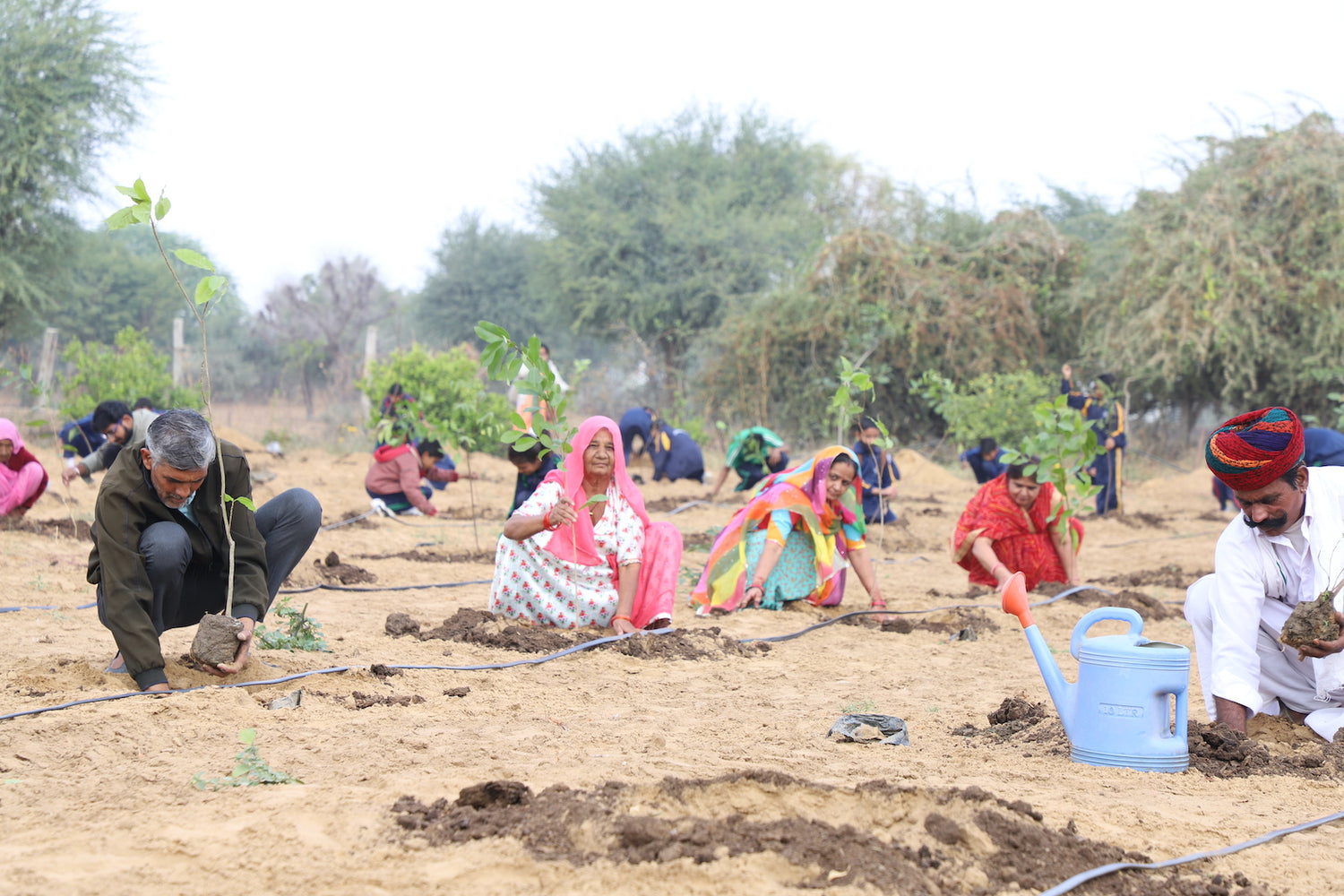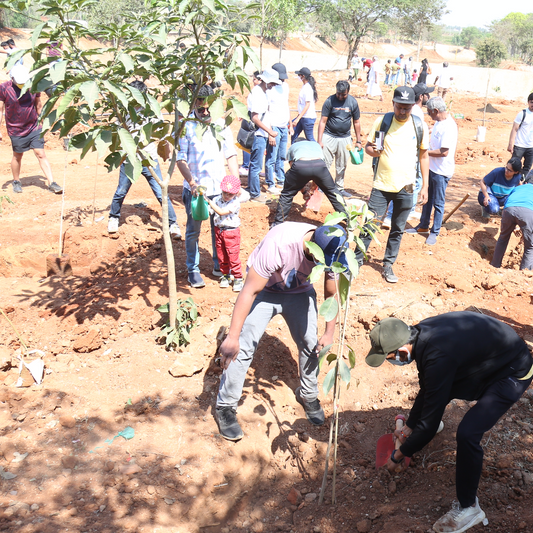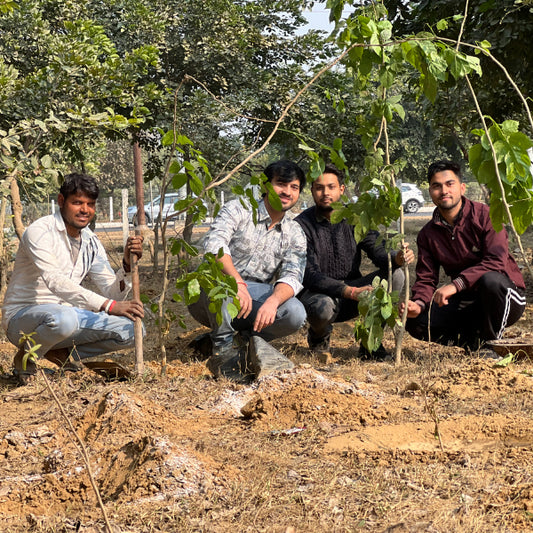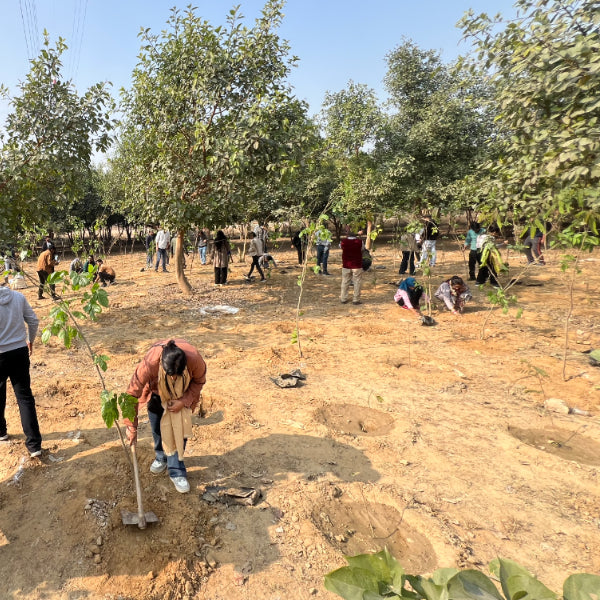Carbon Offset vs Carbon Credit: What’s the Difference?
Carbon Offset vs Carbon Credit: What’s the Difference? 🌍 In the fight against climate change, understanding the terms "carbon offset" and "carbon cre Read more
Connect with us
-
👥 Corporates
If you are looking for:
- 🌲 Tree Plantation Events
- 📊 CSR Projects
📧 corporate@growbilliontrees.com
📞 +91 9699723523
💬 +91 9370599291 WhatsApp (Only)
🕒 Mon - Sat | 10am - 7pm IST
-
🧩 Tree Plantation NGOs
If you are looking for:
- 💰 Financial Assistance
- 🤝 Operational Support
📧 support@growbilliontrees.com
📞 +91 9699723523
💬 +91 9370599291 WhatsApp (Only)
🕒 Mon - Sat | 10am - 7pm IST
-
🌼 Individuals
If you are looking for:
- 👥 Group Tree Plantation Drive
- 🌳 Bulk Tree Plantation
📞 +91 9699723523
💬 +91 9370599291 WhatsApp (Only)
🕒 Mon - Sat | 10am - 7pm IST
Trending
Trees for Corporates
Carbon Offset vs Carbon Credit: What’s the Difference? 🌍
In the fight against climate change, understanding the terms "carbon offset" and "carbon credit" is crucial. Both play significant roles in reducing greenhouse gas emissions, but they serve different purposes. This article will explore the differences between carbon offsets and carbon credits, their environmental impact, and how organizations like Grow Billion Trees Partners are making a difference in this arena. 🌱
What is a Carbon Offset? 🌳
A carbon offset is a reduction in greenhouse gas emissions, such as carbon dioxide (CO2), that is used to compensate for emissions produced elsewhere. For instance, if a company emits 100 tons of CO2, it can purchase carbon offsets equivalent to that amount by investing in projects that reduce emissions, such as reforestation or renewable energy initiatives. The goal is to achieve a net-zero carbon footprint.
What is a Carbon Credit? 💳
A carbon credit represents a permit that allows the holder to emit one ton of CO2 or its equivalent in other greenhouse gases. Carbon credits are part of a cap-and-trade system, where governments or regulatory bodies set a limit on emissions. Companies that reduce their emissions below their allotted cap can sell their excess credits to other companies that exceed their limits. This creates a financial incentive for companies to lower their emissions.
Key Differences Between Carbon Offsets and Carbon Credits 🔍
- Nature: Carbon offsets are voluntary actions taken to compensate for emissions, while carbon credits are part of a regulatory framework.
- Market: Carbon offsets can be purchased by individuals or companies looking to neutralize their carbon footprint, whereas carbon credits are traded in regulated markets.
- Verification: Carbon offsets often require third-party verification to ensure the claimed reductions are real and additional, while carbon credits are issued by regulatory bodies.
Environmental Impact 🌿
Both carbon offsets and carbon credits aim to mitigate climate change by reducing greenhouse gas emissions. According to the Intergovernmental Panel on Climate Change (IPCC), global carbon emissions must be reduced by 45% by 2030 to limit global warming to 1.5°C. Carbon offsets can contribute to this goal by funding projects that sequester carbon, such as tree planting and sustainable agriculture.
Fun Fact: Did you know that one mature tree can absorb approximately 48 pounds of CO2 per year? 🌳 This means that planting trees can significantly contribute to carbon offsetting efforts!
Historical Context 📜
The concept of carbon offsets emerged in the 1990s as awareness of climate change grew. The Kyoto Protocol, adopted in 1997, was one of the first international agreements to establish a framework for carbon trading and offsets. Since then, the market for carbon credits and offsets has expanded, with billions of dollars invested in projects worldwide.
Grow Billion Trees Partners: Leading the Charge 🌲
Grow Billion Trees Partners is at the forefront of promoting carbon offset projects through large-scale tree planting initiatives. Their mission is to plant one billion trees globally, which not only helps sequester carbon but also restores ecosystems and enhances biodiversity.
In regions where they operate, Grow Billion Trees Partners collaborates with local communities to ensure sustainable practices. They provide education on the importance of trees in combating climate change and offer incentives for community members to participate in planting and maintaining trees. 🌍
Conclusion: Making a Difference Together 🤝
Understanding the difference between carbon offsets and carbon credits is essential for individuals and businesses looking to make a positive impact on the environment. By supporting initiatives like those of Grow Billion Trees Partners, we can all contribute to a healthier planet. Whether through purchasing carbon offsets or investing in carbon credits, every action counts in the fight against climate change. 🌎
Join the movement today and help us grow a greener future! 🌱
You may like
Carbon Offset
Think of carbon offsets as your eco-friendly get-out-of-jail-free card. When you emit carbon, you can buy offsets to balance your guilt. It’s like saying, “I’m sorry for my carbon footprint; here’s some cash to plant a tree!”
Carbon Credit
Carbon credits are the currency of the carbon market. Each credit represents a ton of CO2 that’s been reduced or removed from the atmosphere. It’s like trading Pokémon cards, but instead of Pikachu, you’re collecting clean air!
Tree Planting
Trees are the superheroes of the carbon world. They absorb CO2 and give us oxygen, all while looking fabulous. Planting trees is like giving Mother Nature a big hug and saying, “Thanks for all the fresh air!”
Sustainability
Sustainability is the buzzword that makes you sound smart at dinner parties. It’s all about meeting our needs without compromising future generations. Think of it as living in harmony with nature, like a well-balanced yoga pose.
Climate Change
Climate change is the villain in our environmental story. It’s the reason we can’t have nice things, like stable weather. Understanding it is crucial if we want to save our planet from becoming a giant sauna.
Carbon Footprint
Your carbon footprint is like your environmental shadow. It follows you everywhere, measuring how much CO2 you emit through your daily activities. The bigger the footprint, the more you need to offset it—like a guilty conscience!
Renewable Energy
Renewable energy is the cool kid on the energy block. It’s clean, sustainable, and doesn’t come with a side of guilt. Think solar panels and wind turbines, powering your life without leaving a carbon trail.
Greenhouse Gases
Greenhouse gases are the party crashers of our atmosphere. They trap heat and make the planet warmer, which is great if you’re a lizard but not so much for humans. Reducing them is key to keeping our planet livable.
Carbon Neutral
Going carbon neutral is like achieving zen in the environmental world. It means balancing your carbon emissions with offsets, so you’re not adding to the problem. It’s the ultimate eco-friendly goal!
Environmental Impact
Your environmental impact is like your personal report card for Mother Earth. It measures how your actions affect the planet. The lower the impact, the better your grade—A+ for eco-warriors!
Offset Projects
Offset projects are the feel-good initiatives that help you balance your carbon sins. From reforestation to renewable energy, these projects are like the charity events of the carbon world, making the planet a better place.
Carbon Market
The carbon market is where the magic happens. It’s a bustling marketplace where carbon credits are bought and sold, like stocks but with a green twist. It’s the financial incentive to save the planet, one credit at a time!
Corporate Plantations
FAQ
What is a carbon offset?
A carbon offset is like a guilt-free dessert for your carbon footprint. It’s a way to compensate for your emissions by investing in projects that reduce greenhouse gases, like planting trees or renewable energy. So, while you’re sipping that latte, you can feel a tad better about your carbon footprint.
What is a carbon credit?
Think of a carbon credit as a permission slip for polluting. It represents one ton of carbon dioxide that can be emitted. Companies buy these credits to offset their emissions, but it’s like paying for a ticket to the pollution party. Just remember, the more credits you buy, the bigger the party gets!
How do carbon offsets work?
Carbon offsets work like a magic trick for your emissions. You invest in projects that reduce greenhouse gases, and voilà! Your carbon footprint shrinks. It’s like planting a tree in your backyard while you’re off enjoying a road trip. You’re still contributing to a greener planet, even if you’re miles away.
How do carbon credits work?
Carbon credits work like a game of Monopoly for companies. They can buy, sell, or trade credits based on their emissions. If they pollute less, they can sell their extra credits. It’s a financial incentive to be greener, but let’s hope they don’t treat it like a get-out-of-jail-free card!
What’s the difference between carbon offsets and carbon credits?
The difference is as clear as mud! Carbon offsets are voluntary investments in projects that reduce emissions, while carbon credits are regulatory allowances for emissions. One’s a feel-good purchase, the other’s a corporate necessity. Both aim to save the planet, but they play different roles in the game.
Can individuals use carbon offsets?
Absolutely! Individuals can use carbon offsets to balance their own carbon footprints. Whether it’s flying, driving, or binge-watching, you can invest in projects that plant trees or support renewable energy. It’s like giving Mother Earth a little love while you enjoy your guilty pleasures.
Are carbon credits regulated?
Yes, carbon credits are regulated, like a strict teacher keeping an eye on the classroom. Governments set limits on emissions and issue credits accordingly. Companies must play by the rules, or they’ll face penalties. It’s a way to ensure that everyone is doing their part in the carbon credit game.
How effective are carbon offsets?
Carbon offsets can be effective, but it’s not a magic wand. They can help fund projects that reduce emissions, but they shouldn’t be a substitute for reducing your own carbon footprint. Think of them as a cherry on top of your sustainability sundae—nice, but not the main ingredient!
Can businesses benefit from carbon credits?
Yes, businesses can benefit from carbon credits like a kid in a candy store! They can trade credits to meet regulatory requirements or invest in greener practices. It’s a win-win: they reduce emissions and potentially save money. Just remember, it’s not all about the credits; sustainability should be the goal.
Are carbon offsets and credits the same?
Not quite! Carbon offsets are voluntary and focus on funding projects that reduce emissions, while carbon credits are regulatory and allow companies to emit a certain amount of CO2. They’re like cousins in the climate action family—related but with different roles to play.
How do I choose a carbon offset project?
Choosing a carbon offset project is like picking a favorite ice cream flavor—there are so many options! Look for projects that are verified, transparent, and align with your values. Whether it’s tree planting or renewable energy, make sure it’s a project that makes your heart sing!
What’s the future of carbon offsets and credits?
The future of carbon offsets and credits is looking bright, like a sunny day in a forest! As awareness of climate change grows, more individuals and businesses are investing in these solutions. Innovations in technology and stricter regulations will likely shape the landscape, making it an exciting time for carbon action!
























